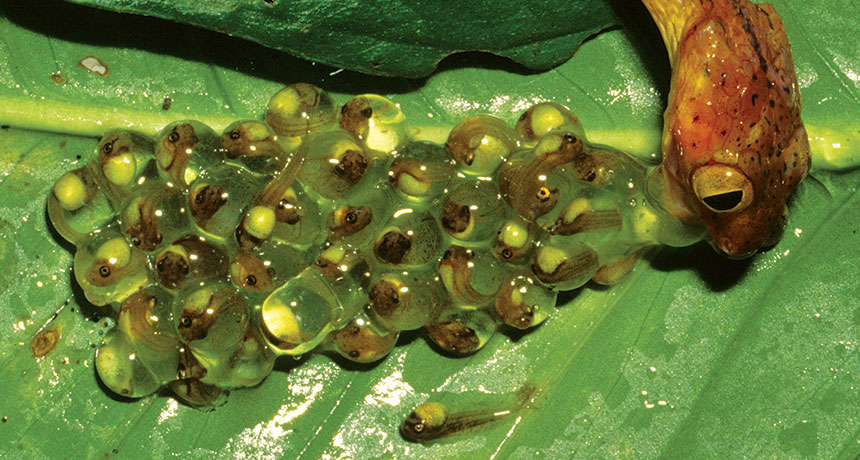How Houdini tadpoles escape certain death

Tree frog tadpoles are the ultimate escape artists. To avoid becoming breakfast, the embryos of red-eyed tree frogs (Agalychnis callidryas) prematurely hatch and wriggle away from a snake’s jaws in mere seconds, as seen above. Embryos also use this maneuver to flee from flooding, deadly fungi, egg-eating wasps and other threats. Adding to the drama, red-eyed tree frogs lay their eggs on the undersides of leaves that hang a few inches to several feet above ponds. So the swimmers perform this feat suspended on a leaf, breaking free in midair and cannonballing into the water below.
High-speed video, captured by Kristina Cohen of Boston University and her colleagues, of unhatched eggs collected from Panamanian ponds shows that the embryos’ trick plays out in three stages. First, upon sensing a threat, an embryo starts shaking and, in some cases, gaping its mouth. Next, a hole forms. (The movement helps tear open the hole, but an embryo’s snout probably secretes a chemical that actually does the breaking.) Finally, the embryo thrashes its body about as if swimming and slips out of the egg.
Orientation is key to a hasty escape, the team reports in the June 15 Journal of Experimental Biology. An embryo must keep its snout aligned with the hole for a speedy exit. In observations of 62 embryos, the getaway took between six and 50 seconds — 20.6 seconds on average.
Some tadpoles may be leaping out of a cauldron into a fire. “There’s a trade-off,” Cohen says. “They may have escaped the threat of a snake, but earlier hatchlings fare worse against some aquatic predators.”